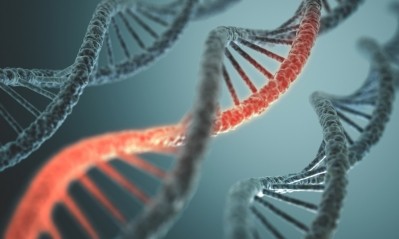Food choices linked to ‘plasticity genes’ and child upbringing

The findings go against current thinking surrounding the weight management of children and obesity prevention. Accepted research has pointed towards variants of obesity genes as dictating a child’s fat intake. Here, scientists have demonstrated genes have a degree of openness to environmental modification and/or intervention.
Childhood obesity has more than doubled in children and quadrupled in adolescents in the past 30 years, according to the Center for Disease Control and Prevention. Obese youth are more likely to have risk factors for cardiovascular disease, such as high cholesterol or high blood pressure.
In a population-based sample of 5- to 17-year-olds, 70% of obese youth had at least one risk factor for cardiovascular disease.
Study particulars

Laurette Dubé, lead researcher on the study and scientific director of the McGill Centre for the Convergence of Health and Economics, used food diaries kept by the parents of approximately 200 Canadian children from the MAVAN cohort in Montreal, Quebec and Hamilton, Ontario.
MAVAN is a community-based, birth cohort study of pregnant Canadian mothers and their children. One of the unique features of the protocol is the range of measures that assess mother-child interaction.
Dubé and her team recorded the fat, protein and carbohydrates percentages the children were consuming. BMI measurements and saliva tests were also recorded to identify which of the children were carriers of the DRD4 repeat 7 gene.
The DRD4 repeat 7 gene is found in approximately 20% of the population and is known to be associated with obesity, especially in women. One study demonstrated that this gene influenced macronutrient intakes and specific food choices from as early as four years of age.
Dubé’s study also examined the children’s family income as a method of assessing the socio-economic environment of the children.
It found that among girls bought up in poorer families, those with DRD4 repeat 7 consumed more fat than other girls from the same socio-economic background. However, girls with exactly the same gene variant who came from wealthier families, compared to these with the same economic conditions consumed less fat.
The results suggest that the gene is not working alone, but possibly how the gene influences an individual in her preference for fat and obesity in later life.
Girls only
Interestingly, the team only observed this result in the female subjects they tested, speculating that evolution-wise girls needed to gain weight easily in order to adapt to adverse conditions in order to reproduce.
They also thought that at age four, it was too early to see these effects in boys as both sexes gain weight at different phases. The children may also respond differently to hunger and feelings of satiety.
“All we can say with certitude from this research is that the gene variant will influence food choices differently according to the environment, but we do not know HOW the gene is influencing food preferences,” said co-author Dr Patricia Silveira.
“These results underscore the importance of moving beyond a ‘one-size-fits-all’ approach to childhood obesity prevention,” added Dubé.
We need to move towards targeted approaches that focus on populations that are particularly vulnerable to both genetic and environmental factors: those who are biologically more vulnerable under adverse environments are those likely to be more responsive to improvements in their conditions.”
The research, published in JAMA Pediatrics, also references research that identifies certain genes, including DRD4 7 repeat, as able to respond to the environment and increasing or decreasing the propensity for certain neurobehavioral conditions.
Source: JAMA Paediatrics
Published online ahead of print, doi:10.1001/jamapediatrics.2015.4253
“Genetic Differential Susceptibility to Socioeconomic Status and Childhood Obesogenic Behaviour Why Targeted Prevention May Be the Best Societal Investment”
Authors: Patricia P. Silveira, Hélène Gaudreau, Leslie Atkinson, Alison S. Fleming, Marla B. Sokolowski, Meir Steiner, James L. Kennedy, Michael J. Meaney, Robert D. Levitan, Laurette Dubé.

























